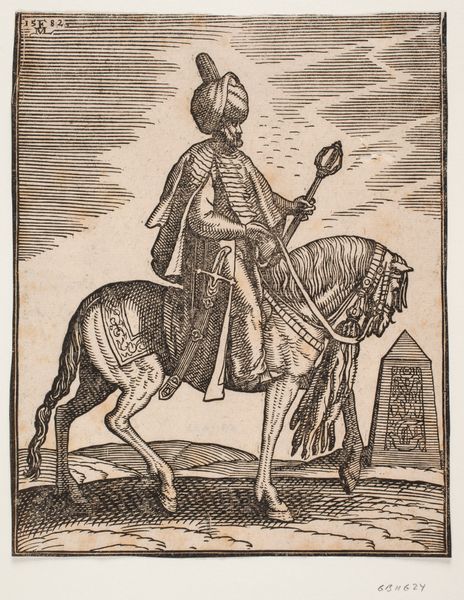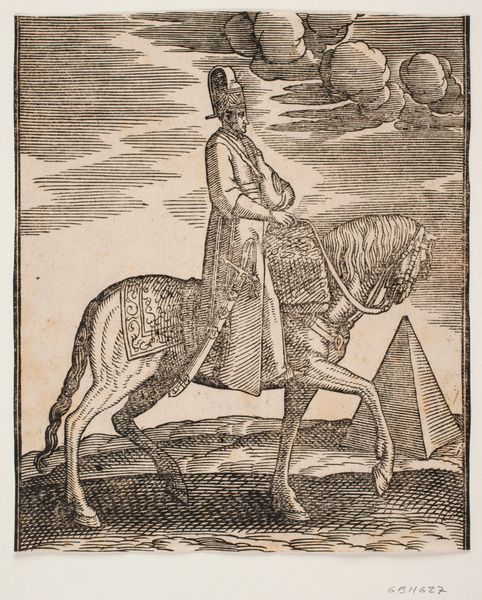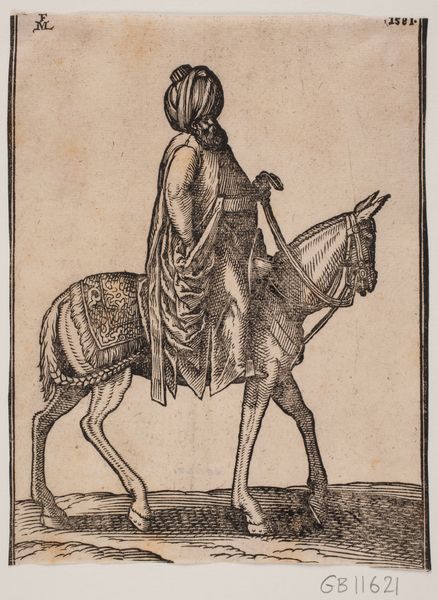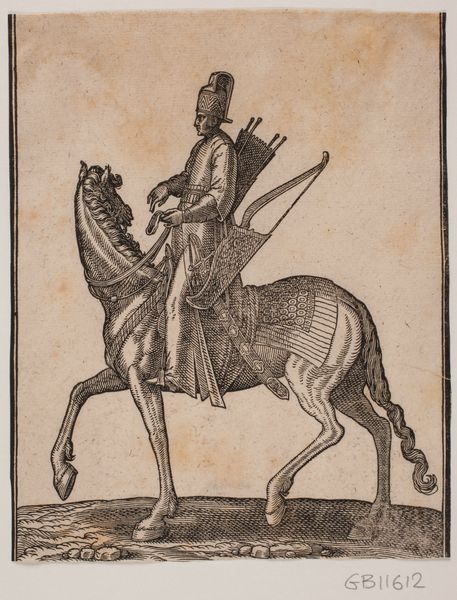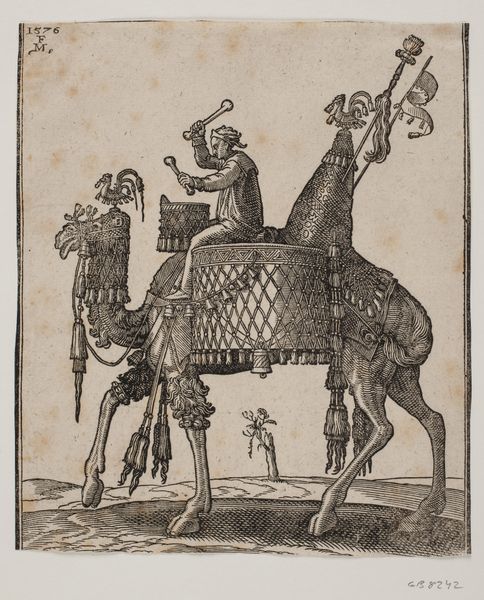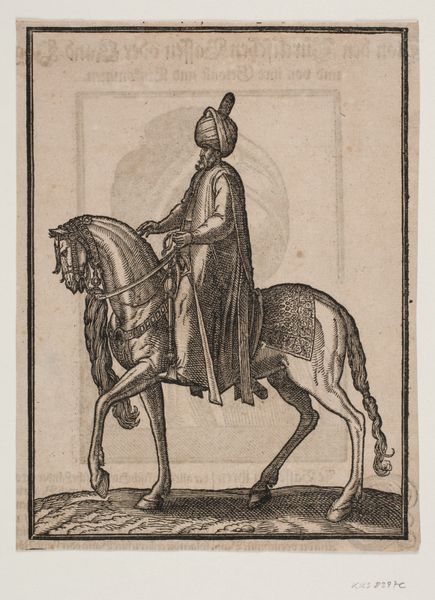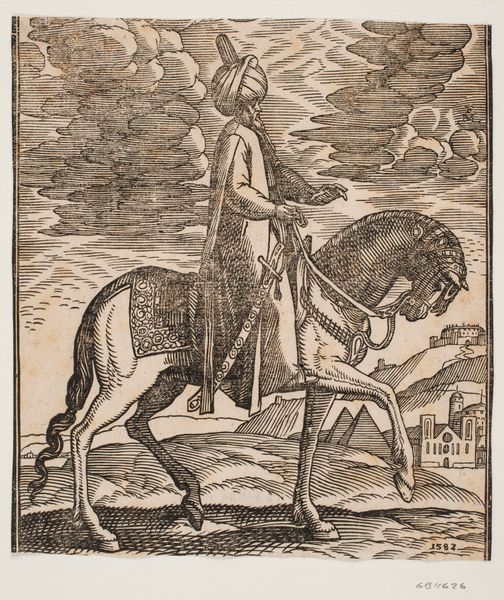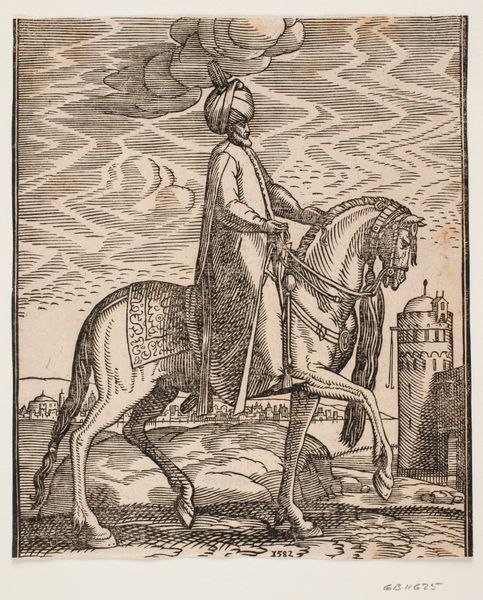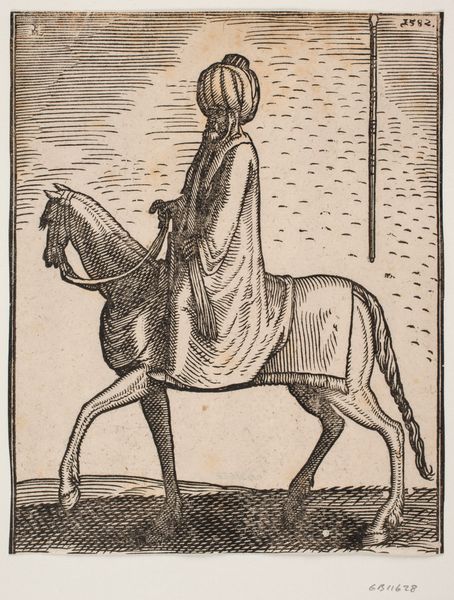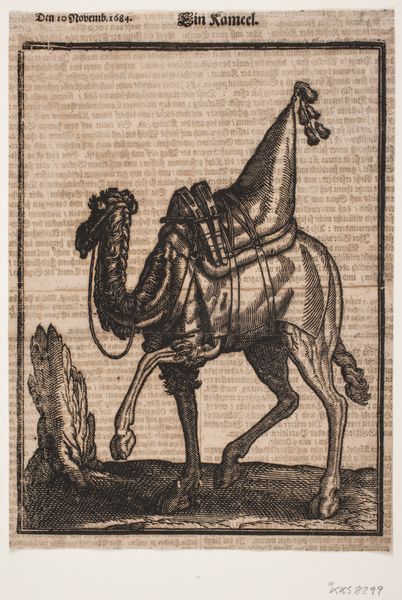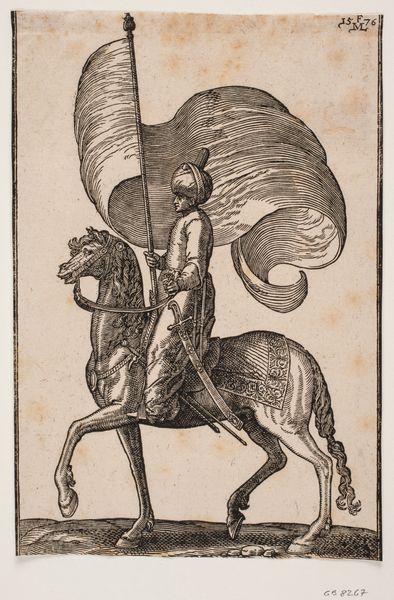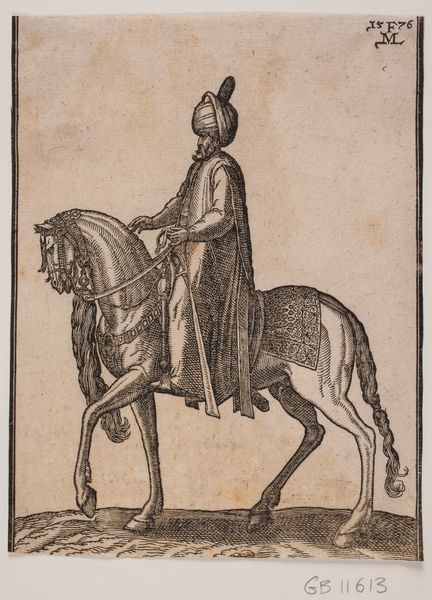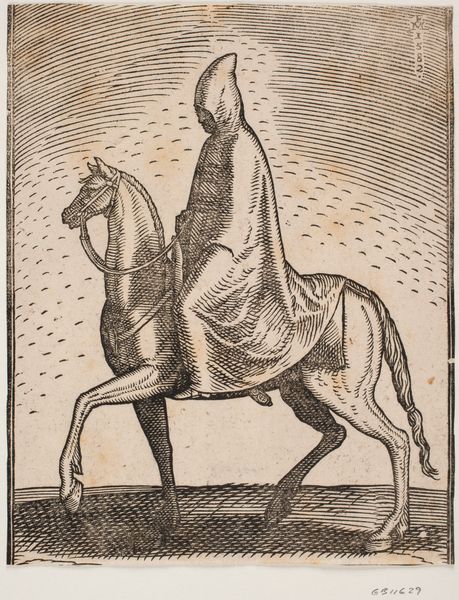
Turbanbærende, ubevæbnet rytter set skråt bagfra; t.h. i baggrunden en pyramide 1581
0:00
0:00
drawing, print, ink, woodcut
#
drawing
# print
#
landscape
#
ancient-egyptian-art
#
figuration
#
ink
#
ancient-mediterranean
#
woodcut
#
history-painting
Dimensions: 204 mm (height) x 171 mm (width) (bladmaal)
Curator: Here we have a print by Melchior Lorck, made in 1581, titled "Turban-Wearing, Unarmed Rider Seen Diagonally From Behind; To the Right in the Background a Pyramid." It's rendered in ink, likely as a woodcut. Editor: The starkness really strikes me. The crisp lines and almost unsettling contrast between the rider and the looming pyramid. It’s very precise but feels strangely distant. Curator: Lorck was a fascinating figure, traveling as a diplomat in the Ottoman Empire. This image speaks volumes about early cross-cultural exchanges and the West's perception—often skewed—of the East. The turban and attire clearly mark the rider's "otherness," especially for a European audience of the time. Editor: Yes, the material details shout of cultural encounter, yet also the simplification through printmaking. Look at the repetitive line work used to depict the drapery, the horse’s mane. It points to the labor and the technology involved in creating and disseminating such imagery, flattening exotic cultures into consumable forms. It makes you think of cheap souvenirs and commercial ventures. Curator: Precisely. It played into existing Orientalist tropes, constructing an image that affirmed European identity in contrast to the 'exotic' East. Notice the unarmed rider too; perhaps a symbolic gesture suggesting inherent peace or, more cynically, weakness? The setting itself—a generic pyramid rather than any specific monument—adds to the sense of a fabricated, rather than documentary, representation. Editor: I’m wondering, what kind of paper was being used and how that factored into the dissemination of information about far-off lands. There is the image, sure, but the production of that image and how many copies could be turned out says something too about production power of this particular region in contrast to the places he traveled. Curator: An interesting thought, placing it within systems of economic and intellectual exchange. It forces us to confront the power dynamics embedded in image-making, not only within the artwork itself but in its very production and consumption. Editor: Absolutely. A simple woodcut speaks volumes about the complex material conditions and socio-political undercurrents of its time. Curator: Indeed. A visual document steeped in both artistry and the politics of perception.
Comments
No comments
Be the first to comment and join the conversation on the ultimate creative platform.
